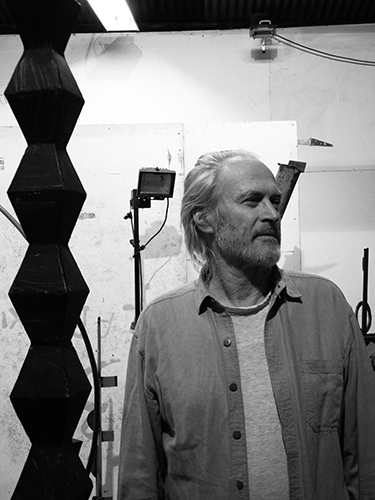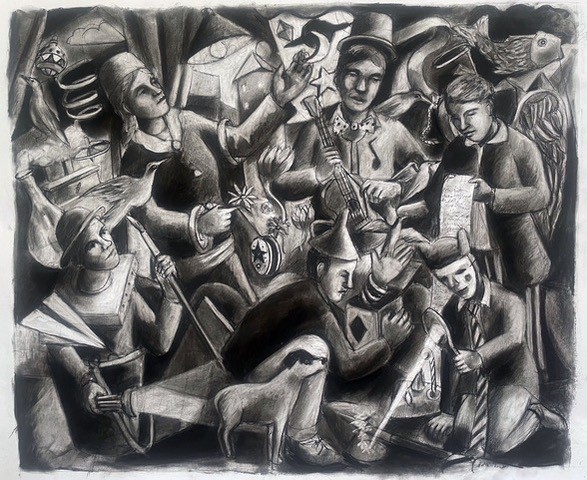Orest Keywan

Orest was born in Marienbad (on the border of Czech Republic and Germany) in 1944 and spent his youth in Canada after migrating there in 1949. Since his arrival to Australia in 1965, Orest has also been the subject of several successful solo shows.
Orest’s sculpture is set apart by a careful consideration of the interaction between viewer and sculpture, an elegant linearity and a unique engagement of space. He works very directly using no drawings or models to create his sculptures.
“Most of my pieces are made over a long period of time, sometimes years. I always work on several things at once. I like to live with them as they develop, to let them grow at their own pace.”
Reciprocally, Orest feels that the viewer also needs to allow enough time to connect with his work and to recognise that it takes time to feel, just as it takes time to see.
Within Orest’s sculpture lie several inherent contrasts. Fine, fretted lines offset wide planes of empty space and natural substances such as wood balance the presence of industrial metals. John McDonald, art critic, previously commented in the Sydney Morning Herald that “all of Keywan’s works may be seen as a conversation between opposing quantities and qualities. Line is pitted against mass, steel or aluminium against wood or plastic.”
What is often singled out in accounts of Orest’s sculpture is his ability to suggest in a work a sense of space that extends far beyond the physical dimensions of each piece. Using whimsical, even insubstantial linearity Orest manages to engage the surrounding emptiness and conjure up a sense of the ephemeral. In a gently ironic manner he infuses his sculpture with greater substance by activating the environment that surrounds it. As a result Orest’s body of work has been described as being at once part of this world yet also distinct from it.
PAST EXHIBITIONS
In Blog
Orest Keywan, Michael Snape and Ayako Saito – Wollombi Valley Sculpture Festival
Image above: Orest Keywan That Line 2023 steel 168 x 271 x 190cm Congratulations to Orest Keywan, Michael Snape and …
Andrew Antoniou – Finalist in the Kedumba Drawing Award 2024
Image above: Andrew Antoniou Weird & Wonderful 2024 charcoal on paper 82 x 88 cm Congratulations to Andrew Antoniou who …
Christine Wrest-Smith – finalist in the Brisbane Portrait Prize 2024
Image above: Christine Wrest-Smith Portrait of Susan Johnson oil on linen 122 x 92cm Congratulations to Christine Wrest-Smith who has been …



























